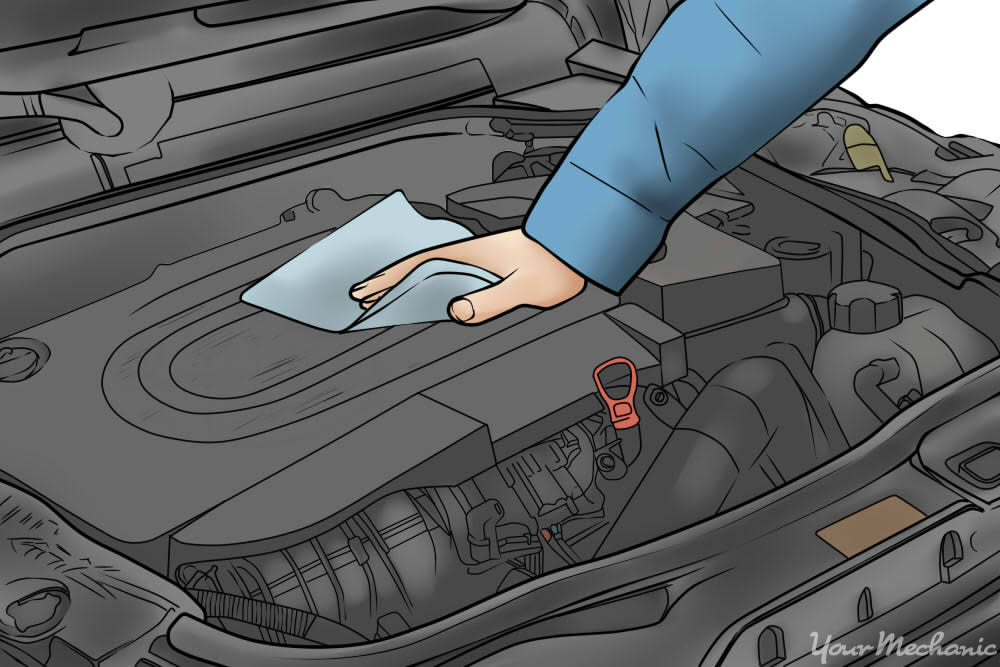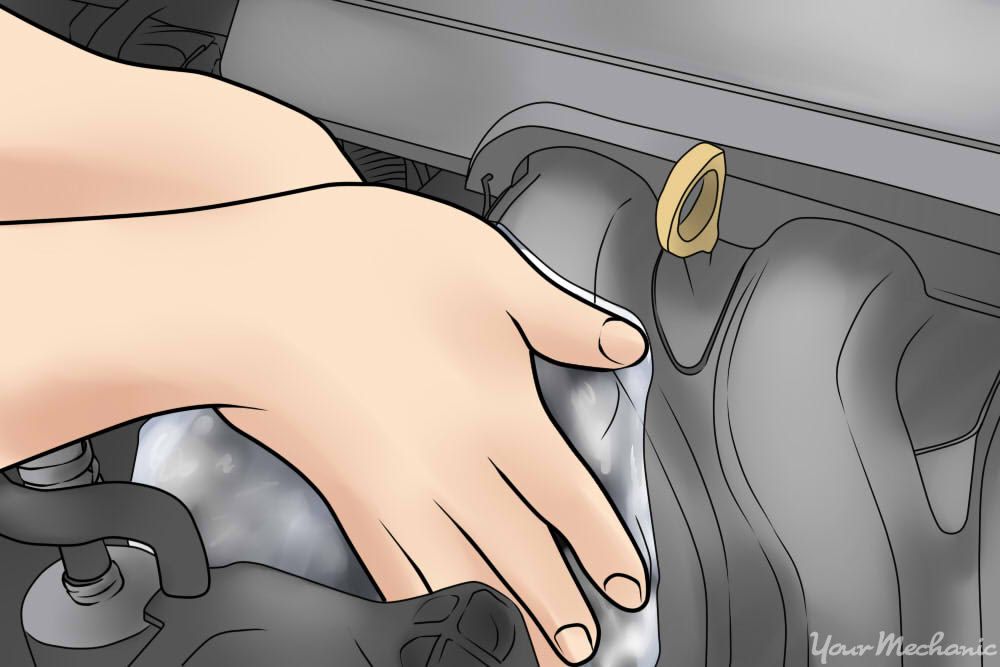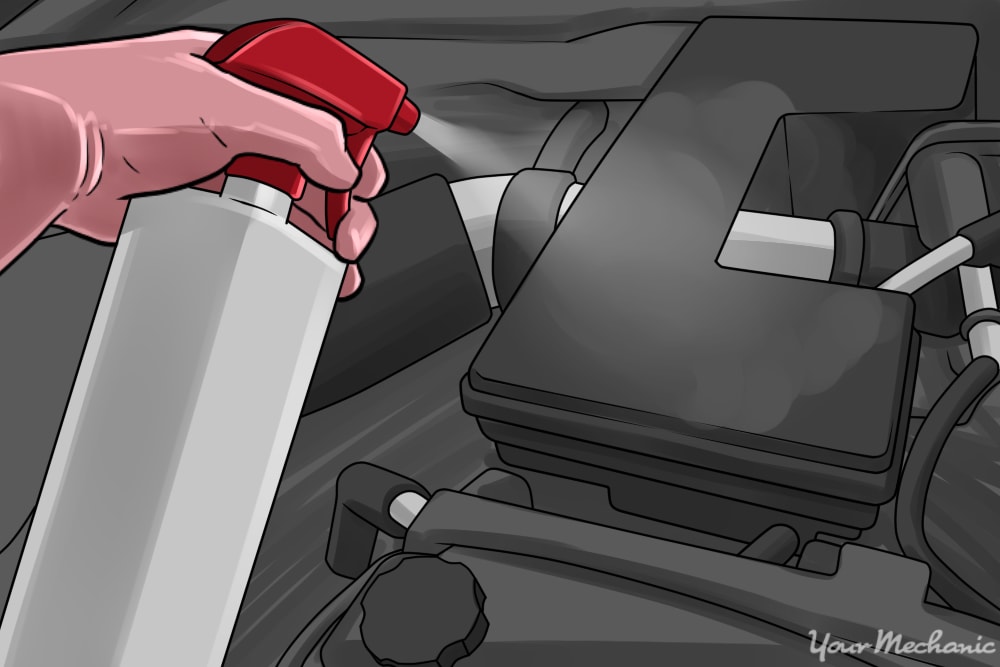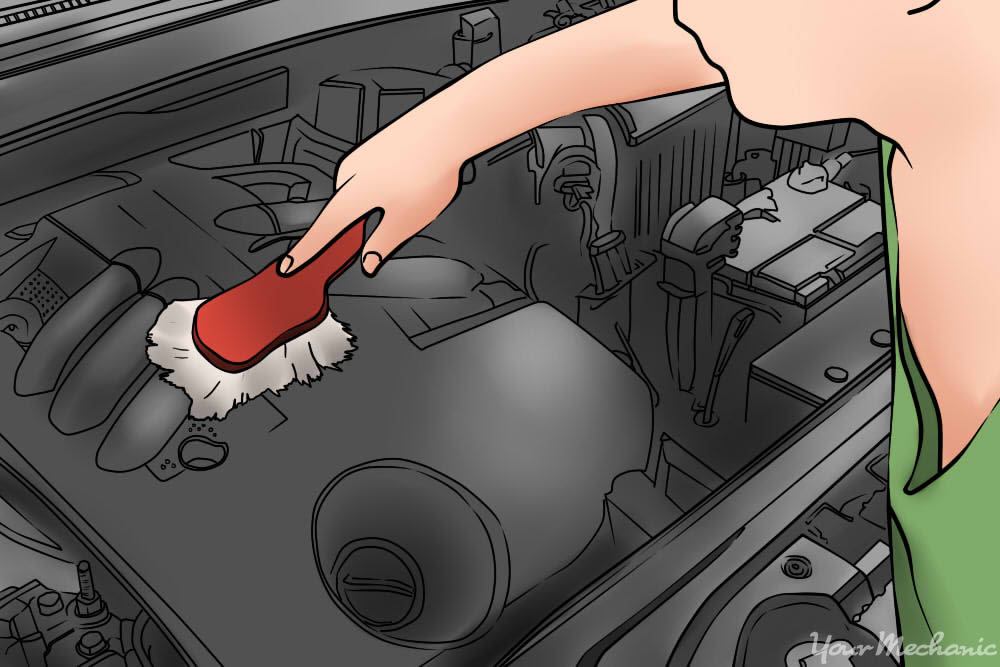

As cars get older, they tend to accumulate quite a bit of dirt and grime from those miles spent on roads and freeways. It does not help either that leftover fluids that had previously leaked from old repairs are still visible messes left behind. Engines can start looking dirty very quickly, and will need a proper cleaning to remove the mess.
Whether you want to see a shiny engine bay, are getting ready to sell your car, or need to clean your engine to aid in diagnosing leaks, rest assured that cleaning your engine is something you can tackle yourself with a little patience and a little prior knowledge.
Part 1 of 3: Choose a location
Where you clean your engine is the first important step to consider in the process. It is illegal to dump contaminated water into sewers or on to city streets, so you will need to locate a safe place where run off water from the engine can be collected for proper disposal. Many self car wash businesses offer an area for engine cleaning, just confirm with them they have the proper disposal facilities when you get there.
- Tip: Never wash a hot engine, as throwing cold water on a hot engine could damage it. A hot engine can also cause the degreaser to dry on the engine, leaving spots. Let the engine cool down completely. Cleaning an engine bay is best done in the morning after the vehicle has sat overnight.
Part 2 of 3: Materials needed for cleaning an engine
- Bucket
- Bristled cleaning brush or dish scrubber
- Gloves
- Engine degreaser
- Plastic bags
- Safety glasses
- Shop vacuum or an air hose
- Water, preferably hot
Water hose with a trigger nozzle to control the flow of water, or a spray bottle
Warning: Never wash a hot engine, as throwing cold water on a hot engine could damage it. A hot engine can also cause the degreaser to dry on the engine, leaving spots. Let the engine cool down completely. Cleaning an engine bay is best done in the morning after the vehicle has sat overnight.
Part 3 of 3: Cleaning the car engine
Step 1: Cover parts that should not get wet. Locate and cover up the alternator, air intake, distributor, coil pack and any exposed filters.
Use a plastic bag to cover up these parts. If these parts get wet, the vehicle might fail to start until they have completely dried out.
Cover up any other parts that you may be concerned about getting wet.
Do not forget to the remove the bags once you are done cleaning.
Step 2: Prep your degreaser solution. Mix the degreaser of your choice in a bucket with water so that it is a soapy mixture, or follow the instructions on the bottle. This is also the case for applying it to the engine - always be sure to follow all of the safety instructions on the product.
Step 3: Rinse the engine bay and engine. Use a pressure washer or hose set on low to medium pressure.
Work from the back of the engine bay to the front, starting with the firewall and moving forward. Give the engine bay a thorough rinsing. Avoid using too much direct spray on electrical components.
- Warning: Setting the washer too high can possibly damage engine components or get water into electrical connections, causing problems.
Step 4: Degrease the perimeter of your engine bay. Apply the degreaser per the manufacturer’s instructions. Do not get degreaser on painted surfaces.
Rinse the degreaser off with the hose or power washer. Repeat this step if degreaser does not remove all of the dirt and grime on the first pass.
- Warning: Move quickly and do not let the degreaser dry to the engine or components, as it can leave unsightly spots.
Step 5: Scrub the engine gently. With the bucket of mixture, use a firm bristled brush or other cleaning brush such as a dish scrubber to gently scrub the engine.
Step 6: Let the degreaser sit. Once done, do not rinse, but allow the engine degreaser to sit for about 15-30 minutes. This will allow the engine degreaser time to break down the grease and debris that could not be scrubbed off.
Step 7: Rinse the degreaser. After the engine degreaser has had time to sit for a while, you can proceed to rinse off the degreaser with the hose or the spray bottle filled with water.
The ideal setting for the spray would be more of a mist rather than full pressure. We want to gently remove the engine degreaser and grime, not force water or grime into areas where it should not be.
Tip: For hard to reach areas, you can get the help of a brake cleaner canister, one with a straw nozzle attachment, to blast away areas caked up with dirt where your hand cannot reach.
Tip: Any plastic pieces in the engine bay, such as fuse box covers and engine covers, can be wiped clean with a damp rag and a safe for plastic cleaner in a spray bottle.
Step 8: Repeat process on stubborn areas. After everything is rinsed away you may notice some areas that were missed, or areas that could need extra attention. If you see this, feel free to repeat the above process as many times as necessary.
Always be sure to take care to catch all runoff water, and to keep your non-water friendly pieces covered in plastic.
Step 9: Dry the engine bay. Use clean towels or a blower if you have one. Use cans of compressed air to dry out any areas where it is difficult or impossible to reach with a towel.
Leaving the hood open can help the drying process if it is a hot and sunny day.
Step 10: Remove the bags from the engine components. Dry off any water that has gotten on them with a clean cloth.
Step 11: Detail the engine’s hoses and plastic parts. If you wish to shine up the hoses and plastic parts in the engine compartment, use a rubber or vinyl protectant designed for use in the engine compartment. These are available at any auto parts store.
Use clean cloths to apply the protectant per the manufacturer’s instructions.
Make sure to remove the plastic bags covering the electrical components before you finish the job and close the hood.
Once you are satisfied that you have removed all the grime and grease from your engine, you can feel proud knowing you have cleaned your car’s engine on your own! Not only will this help the engine over time by making leaks and fluids easier to spot, but this can definitely help if you're selling your vehicle as it shows prospective buyers how well you took care of your car.






